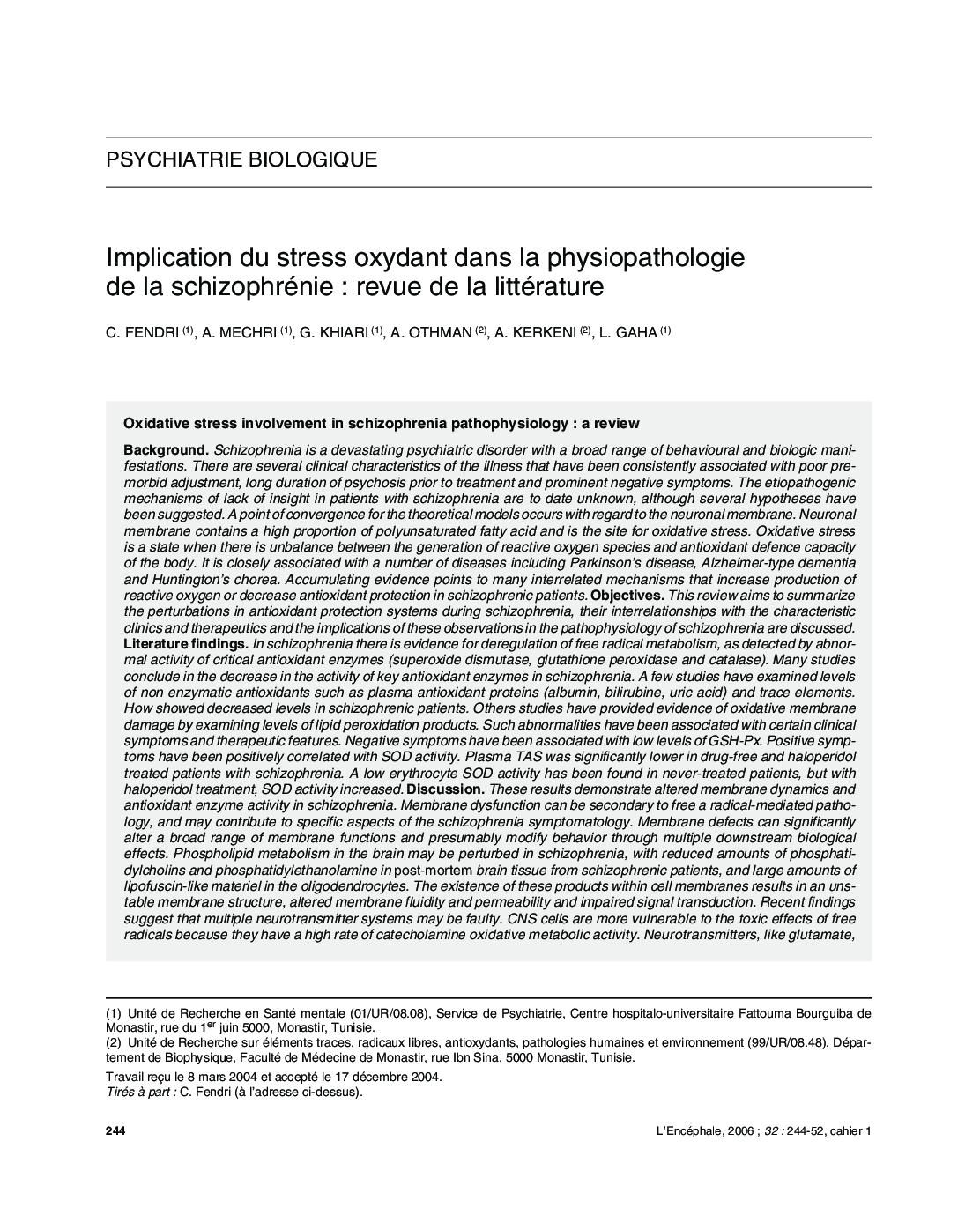| Article ID | Journal | Published Year | Pages | File Type |
|---|---|---|---|---|
| 4183370 | L'Encéphale | 2006 | 9 Pages |
Abstract
These results demonstrate altered membrane dynamics and antioxidant enzyme activity in schizophrenia. Membrane dysfunction can be secondary to free a radical-mediated pathology, and may contribute to specific aspects of the schizophrenia symptomatology. Membrane defects can significantly alter a broad range of membrane functions and presumably modify behavior through multiple downstream biological effects. Phospholipid metabolism in the brain may be perturbed in schizophrenia, with reduced amounts of phosphatidylcholins and phosphatidylethanolamine in post-mortem brain tissue from schizophrenic patients, and large amounts of lipofuscin-like materiel in the oligodendrocytes. The existence of these products within cell membranes results in an unstable membrane structure, altered membrane fluidity and permeability and impaired signal transduction. Recent findings suggest that multiple neurotransmitter systems may be faulty. CNS cells are more vulnerable to the toxic effects of free radicals because they have a high rate of catecholamine oxidative metabolic activity. Neurotransmitters, like glutamate, can induce the same metabolic processes that increase free radical production and can lead to impaired dopamine-glutamate balance. These results question the role of this imbalance in the biochemical basis evoked in the etipathogenic mechanisms of schizophrenia, as well as the role of antioxidants in the therapeutic strategy and their implication in preventive and early intervention approaches in populations at risk for schizophrenia.
Keywords
Related Topics
Health Sciences
Medicine and Dentistry
Psychiatry and Mental Health
Authors
C. Fendri, A. Mechri, G. Khiari, A. Othman, A. Kerkeni, L. Gaha,
